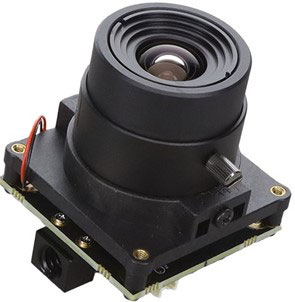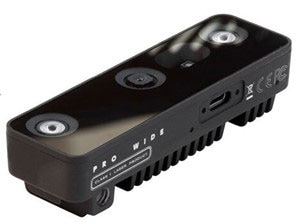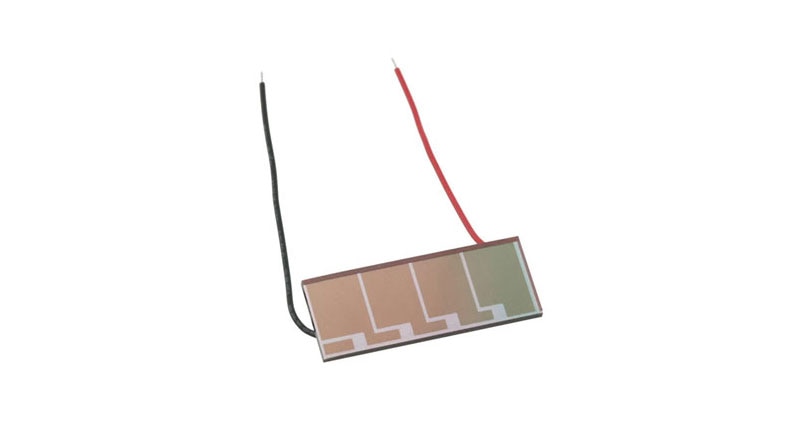Who Owns the Video Feed for Home Security Surveillance?
Smart security cameras are gaining popularity because they help us feel safer and enable us to monitor our homes from anywhere.
Whether you’ve got a simple video doorbell or a whole network of cameras around your property, these systems rely on cloud storage. And that’s where the problem starts. We assume our video footage stays private and that we’re in complete control of it.
Unfortunately, it’s not that simple. When we set up these systems, we’re often handing over more power to third-party companies than we realize. This lack of transparency comes from the opaque nature of service-level agreements that we implicitly agree to without understanding.
But time and again, we see stories about data breaches and unauthorized access to home surveillance data. This leaves many of us operating under assumptions that are simply not true, potentially putting our privacy at risk without even realizing it.
 Figure 1: Leopard Imaging’s IMX477 module provides enhanced image clarity and low-light sensitivity for home surveillance hubs. (Image source:Leopard Imaging)
Figure 1: Leopard Imaging’s IMX477 module provides enhanced image clarity and low-light sensitivity for home surveillance hubs. (Image source:Leopard Imaging)
Cloud storage and processing for home surveillance
Fundamentally, cloud-based video surveillance operates by capturing video via on-site cameras and then transmitting this data over the internet to be stored on remote servers. These servers are managed by a third-party provider who assumes responsibility for hosting, managing, and securing the data. This architecture inherently consolidates risks.
A single security vulnerability, misconfiguration, or malicious act at the cloud provider’s end can expose our records. This means the operational efficiency we gain through data centralization creates a larger target for cybercriminals. Often, post-processing is performed in the cloud using AI and machine learning for intelligent search, real-time monitoring, and automated incident detection.
The shift in data custody has led to uncertainties in privacy and compliance. The comparison between cloud and local storage clearly shows that the move to the cloud is driven by benefits such as remote access and automatic backups. However, this convenience comes at the direct cost of losing physical and direct digital control over our data.
Building a responsible home surveillance
To effectively navigate the complexities of home surveillance, we must adopt a layered approach. There exists a range of options, each with its trade-offs between convenience, cost, and user control. Among the most crucial aspects are the location of data storage and the processing of that data.
Local storage, such as SD cards and physical storage devices, can be a safer alternative to cloud storage, as it provides us with complete physical and logical control over our data. While this setup is susceptible to physical theft or damage, it may require more manual management.
 Figure 2: Arducam OAK-D-Pro W supports on-device AI processing, ideal for edge-based facial recogntion in hybrid surveillance systems. (Image source: Arducam)
Figure 2: Arducam OAK-D-Pro W supports on-device AI processing, ideal for edge-based facial recogntion in hybrid surveillance systems. (Image source: Arducam)
A modern and more balanced approach involves hybrid cloud security systems. These systems leverage edge processing capabilities, enabling predictive analytics, accurate threat detection, and advanced features such as facial recognition and object differentiation at our site. They only upload relevant, pre-analyzed portions of footage to the cloud for deeper analysis.
These hybrid cloud systems with edge processing prioritize end-to-end encryption and privacy-by-design principles. These technologies aim to embed privacy protections directly into the system architecture and functionality from the outset, rather than relying on after-the-fact security measures.
At the same time, cloud providers can store surveillance footage in line with GDPR and CCPA guidelines. Key compliance measures include defining data collection to only what is strictly necessary and setting appropriate data retention limits, such as auto-deleting footage after 30 days.
Conclusion
The benefits of cloud-based home security systems come at the cost of giving control over sensitive personal data to third-party providers. We need to conduct thorough due diligence when selecting a home surveillance system, from considering various storage solutions to AI processing options, such as local or hybrid models.

Have questions or comments? Continue the conversation on TechForum, DigiKey's online community and technical resource.
Visit TechForum







